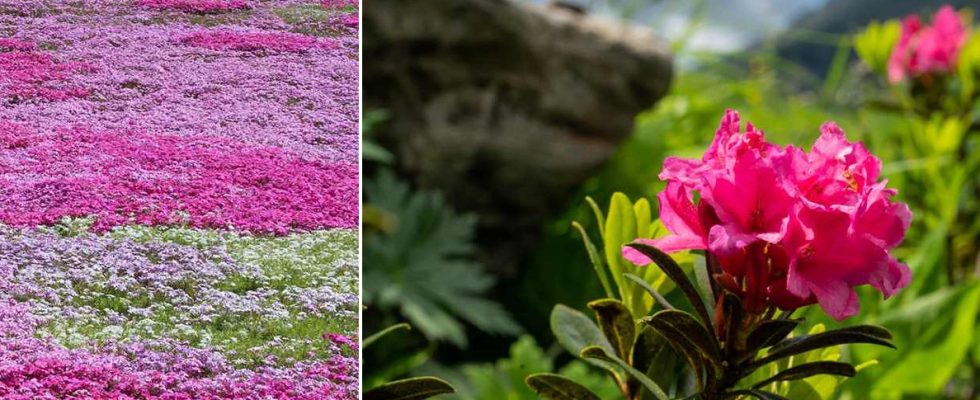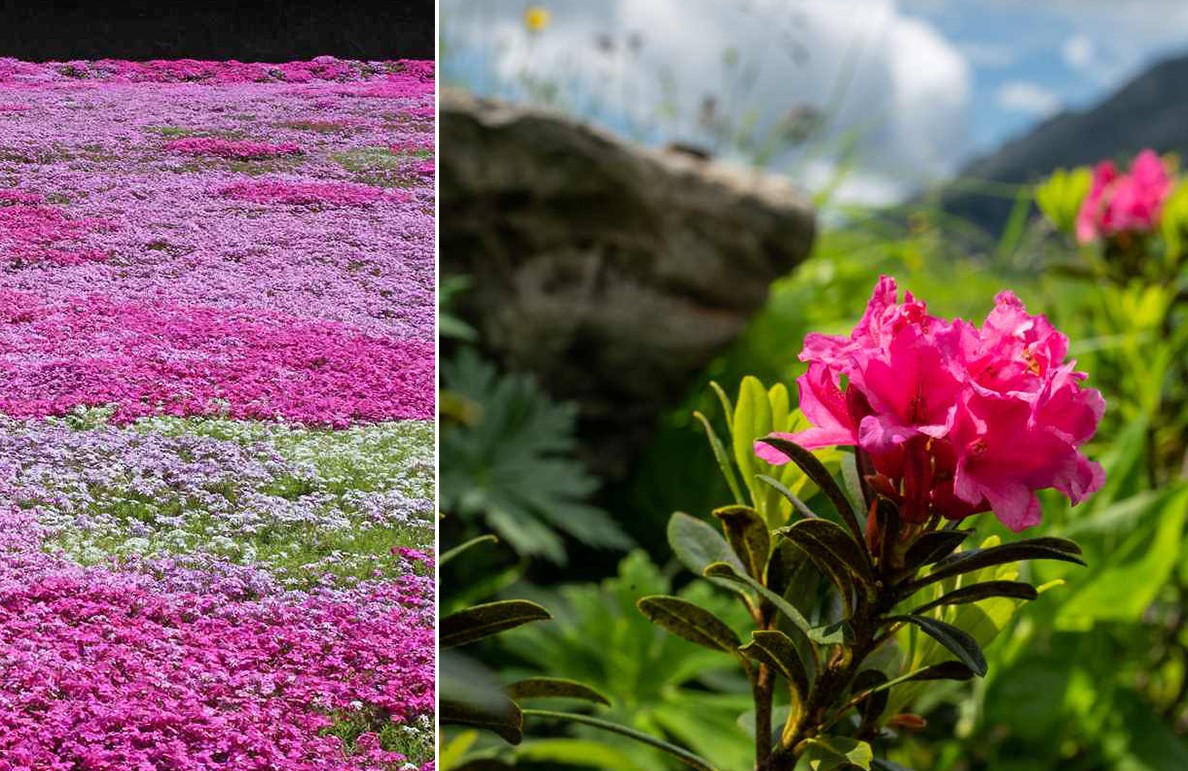
The constraints weighing on vegetation
If you have a garden to develop in a mountainous region, when choosing your plants, do not just follow your desires, but also take the growing conditions into account. Here is what characterizes them:
- The climate : obviously, it has nothing to do with that of the South or that of the plain regions, among others. In the mountains, winters are generally harsh with snowfall, longer periods of frost, wind, etc., the temperature differences between day and night are greater, the summer season arrives later and ends earlier. You must therefore turn to plants which can withstand these climatic hazards and which flourish quickly.
- Floor : he too imposes constraints. Indeed, it can be steep and rocky, which means that you will have to arrange your land accordingly. But the slope also makes the soil retain less water. It can therefore be dry in summer.
Perennials suitable for mountain gardens
Moss phlox

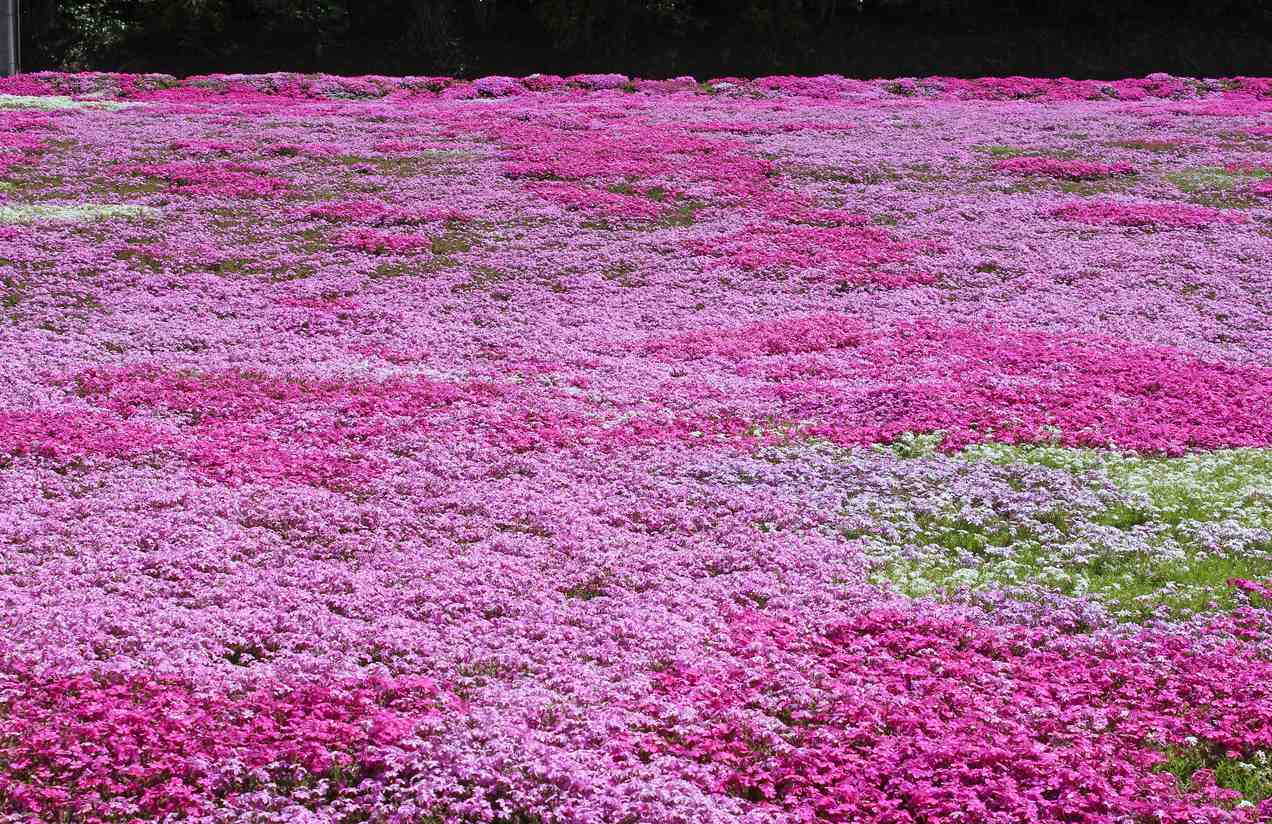
Also known by its scientific name Phlox subulata, moss phlox is native to the rocky slopes of the United States. This perennial plant has the advantage of form covering tufts which spread quickly, thus constituting an effective ground cover.
What makes all the charm of this plant are its evergreen foliage and the small, star-shaped, brightly colored flowers with which it adorns itself from the start of summer. Due to its origins, it is a plant that thrives on sunny rock gardens or steep terrain. Another asset for mountainous regions, it is very rustic sinceit supports temperatures down to -29°C. Rapidly developing, it can, when mature, reach 40 cm wide and 10 cm high.
Mountain arnica


Also known as Arnica montana, this perennial plant is typical of acidic and poor soils. It is also called “Alpine plantain” or “Savoyard tobacco” because of its aromatic leaves that mountain dwellers once smoked.
With its beautiful flowering in the shape of small orange-yellow daisies which begins in June and extends until September, this plant will bring brightness to your exteriors. This plant needs to be installed in full sun in well-drained, light soil with an acid tendency. Less rustic, However, it can withstand temperatures down to -15°C. When mature, it can reach 50 cm high and 30 cm wide.
She is known for her soothing and healing properties.
Delphinium

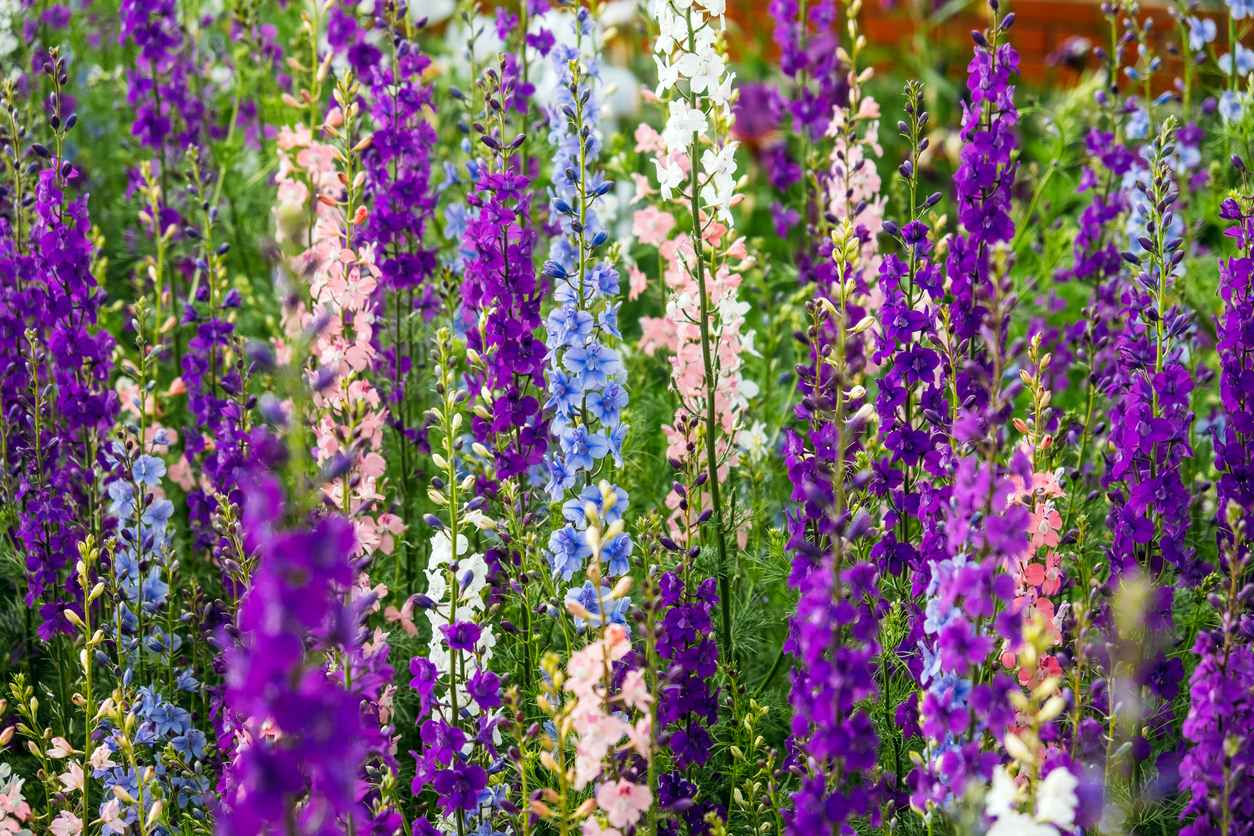
Also known under the names “Larkspur” or “Dolphinella”, this plant from the Ranunculaceae family is adorned, from the beginning of summer, with flowers in the form of large spikes, generally blue, purple or white.
While there are perennials, some varieties are annuals. When choosing your delphiniums carefully check the hardiness of the chosen variety. This plant needs to be installed in the sun in a rich, light and deep soil. Its dimensions when mature vary depending on the variety, but it can reach up to 2 m high and will bring volume and verticality to your flower beds.
Shrubs suitable for mountain gardens
Ferruginous Rhododendron

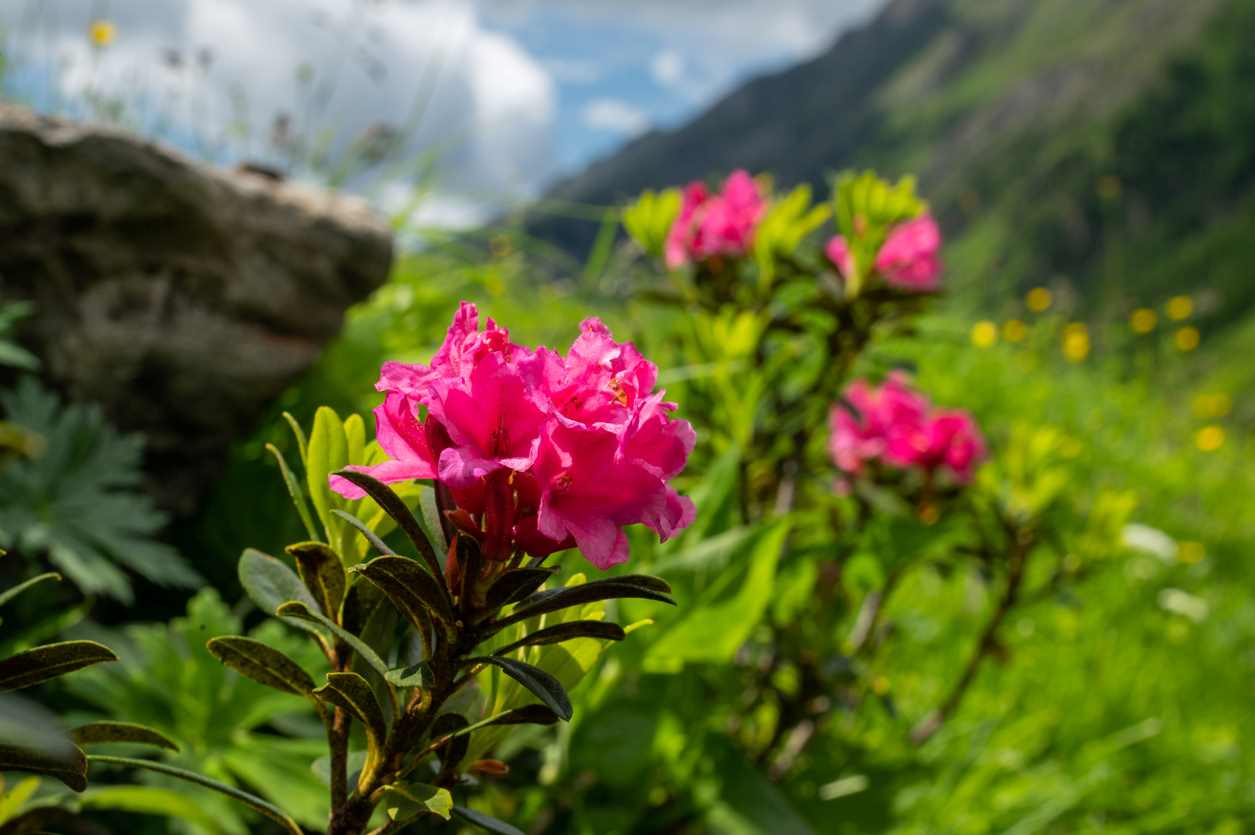
The rhododendron comes in many varieties which differ in size, flowering and color. Among these varieties, the ferruginous rhododendron, which owes its name to the rust color of the underside of these leavesis also called “Alpine oleander”.
This evergreen shrub is appreciated for its long decorative flowering which appears between May and June. Another of its advantages is that it adapts to the shape of the ground which supports it, which allows it to adapt to many relief configurations. If you install it in a location in partial shade, it will require little maintenance.
Hawthorn

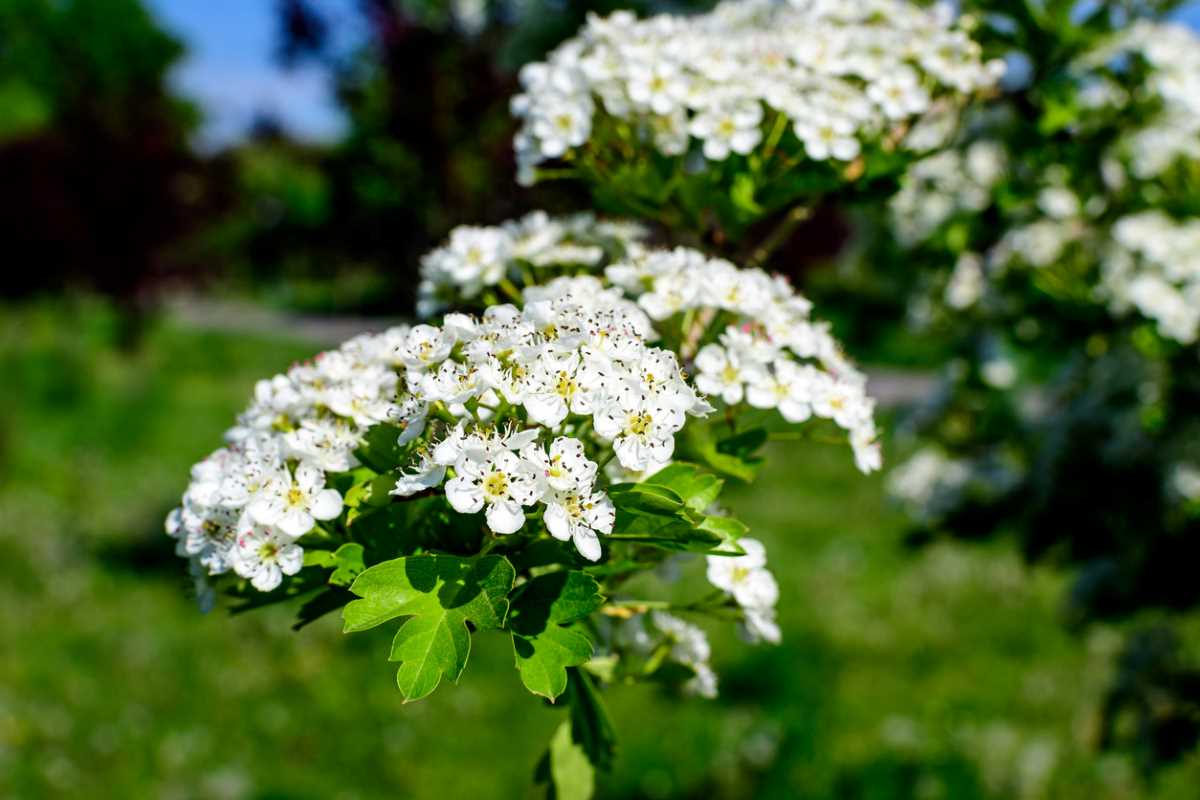
From the Rosaceae family, the hawthorn is a deciduous shrub which is covered with a beautiful flowering in springfollowed, in autumn, by very decorative red fruits and very appreciated by birds, the cenelles. Easy to maintain, it withstands temperatures down to -20°C. The hawthorn is not very demanding regarding the nature of the soil, it only requires to be installed in the sun. It can reach between 6 and 12 meters high.
Rugosa rose

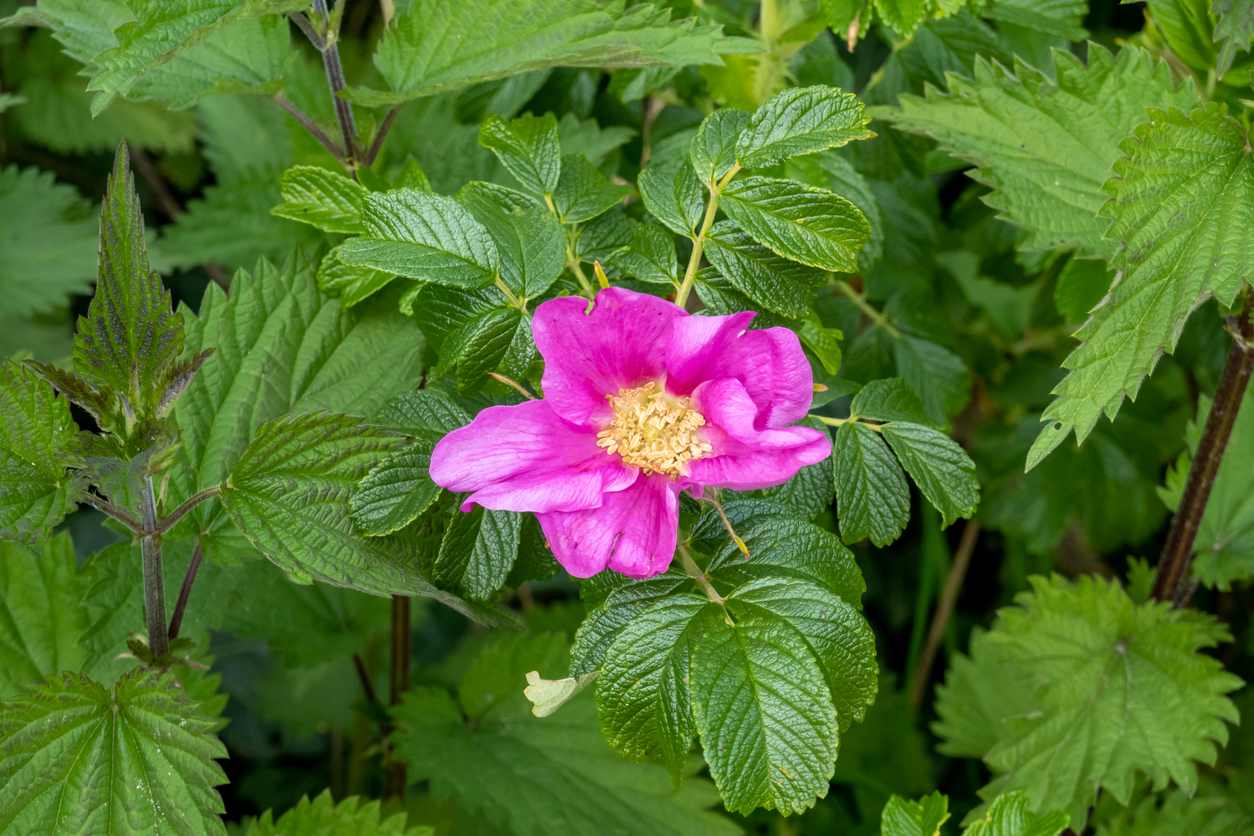
THE rugosa rose bush or rough rose bush is also known as Japanese rose bush and, for mountainous regions, it is the rose bush par excellence because it is a wild rose bush.
Compared to other rose bushes, it has the advantage of being even more hardy, it supports temperatures up to -20°C, and more robust. When mature, it can measure between 1 and 2 meters high. From June to September, it is covered with a fragrant pink, red or white bloom followed by fruits that delight the birds. It should be installed in well-drained soil in a sunny location.
Trees suitable for mountain gardens
Common hazel


The common hazel, also called hazel, is a fruit tree which can be grown in a mountain garden. When mature, it can reach 4 m wide and 5 m high. You will appreciate its round leaves, its yellow catkins, and, of course, its hazelnuts. This deciduous tree with a bushy habit is very hardy and can be grown in all types of fresh soil in which it develops quickly.
Himalayan cedar

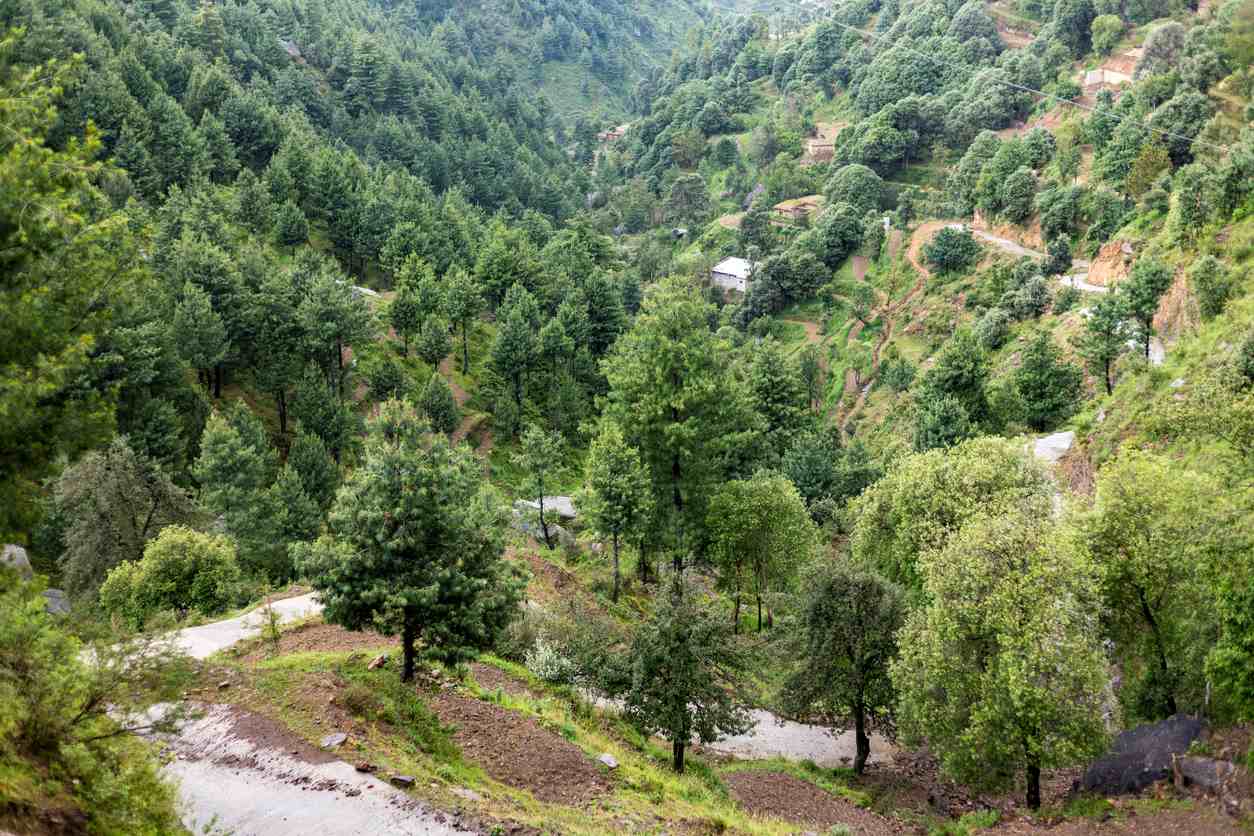
Native to forests in the foothills of the Himalayas, this rapidly growing conifer is characterized by its conical shape and its long, supple, bluish needles which are arranged in a rosette. Due to its origins, it can withstand temperatures up to -15°C. Furthermore, it requires to be installed in the sun in normal soil. At maturity, it can reach 40 m high and 10 m wide, but there are a few dwarf cultivars for smaller gardens.
Ash


This large tree with its majestic silhouette will be more suited to large gardens since it can reach 40 m high. Again, some species are more compact to be planted almost anywhere. This fast-growing tree adapts to all types of soil, withstands strong winds and temperatures down to -40°Cbut needs to be installed in a sunny location.
It requires no maintenance, although it responds very well to pruning. However, the latter is not obligatory.

